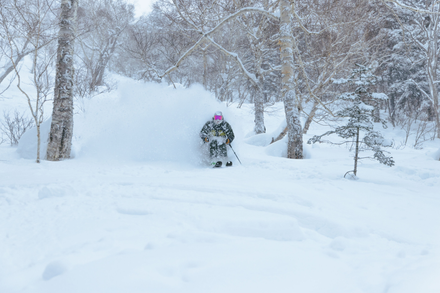
Water column: breathability and water resistance
Everything about the water column of ski wear!
What is the difference between waterproof and water resistant?
This may sound strange but you don’t want your clothing to be entirely waterproof. That would be the same as wearing a plastic bag, nothing goes in and nothing goes out. Our functional outerwear needs to make a little magic. It needs to be breathable and at the same time, water resistant. The heat and moisture generated by your body as you ski or snowboard should be able to escape. At the same time, the moisture on the outside of your outerwear needs to be kept out.
What does the ‘K’ mean?
You’ve maybe seen the letter ‘K’ in product descriptions and wondered what it stood for? Well, ‘K’ is an abbreviation of the Greek word ‘kilo’ which means ‘thousand’. So a jacket with 10K water resistance has a 10.000mm water resistance. This number is an indication of just how water resistant your ski and snowboard outerwear is. Okay, but how does that work, you may ask yourself? We use a water column to help use measure this number.
What does water column mean and how to measure it?
A water column is used to measure the water resistance of your ski and snowboard jacket. It’s a square tube with inner dimensions of 30mm x 30mm that is placed on the fabric and filled with water. The height of the water column indicates the level of water pressure that a fabric can withstand before water penetrates it.
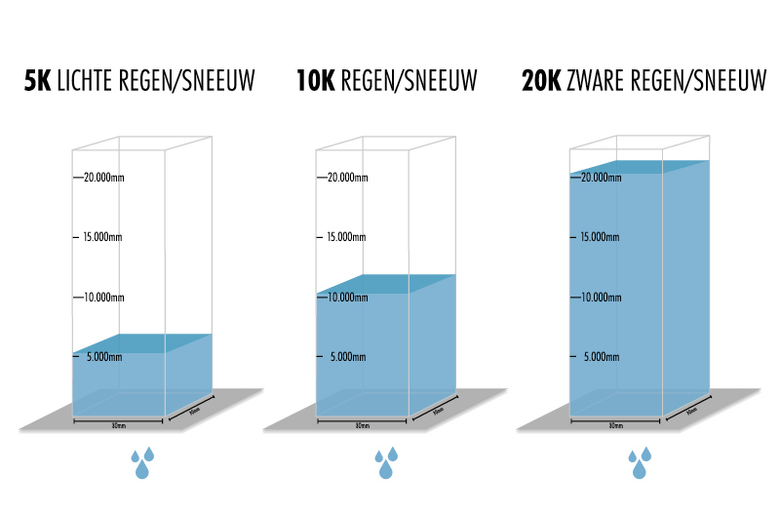
Water column 10,000 mm (10K) meaning
In the case of a 10K or 10.000mm fabric, this means that you can place a water column 10.000mm high on top of your fabric before water would begin to seep through.
Water column 20,000 mm (20K) meaning
Likewise in the case of a 20K or 20.000mm fabric, this means that you can place a water column 20.000mm high on top of your fabric before water would begin to seep through.
The higher this number is, the more water-resistant the fabric is. 5000mm is low water resistance, 10.000mm is average and 20.000mm is high.
Why water resistant ski / snowboard wear?
So the water resistance rating let’s you know how you ski and snowboard clothing will perform under pressure, literally the pressure of water. This is important as you’ll be sitting on a chairlift or sitting in the snow and you don’t want the snow to start seeping in. And of course you want to stay dry if the snow is blowing or there’s a rain shower!
Is all ski wear water resistant?
When you’re talking ski outerwear i.e. ski and snowboard jackets, trousers and salopettes, then they should and need to be water resistant! But we can only truly speak for ourselves here at Protest. All of our ski and snowboard outerwear has either 10K or 20K water resistance. Check the individual product specifications to see which level of the water resistance and breathability the jacket or trousers has.
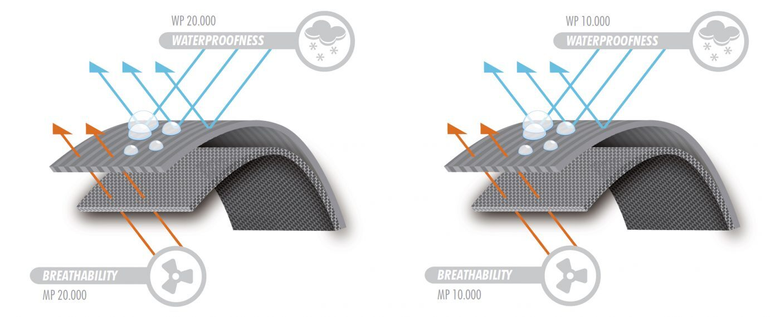
Why breathable ski wear?
Moisture also needs to be able to leave your clothing; your outerwear needs to be breathable. If water vapour can’t leave the inside of your clothing, you’ll start to get wet from the inside and this will probably lead to you getting cold. Breathable fabrics allow the water vapour to be transported through the material and away from the body. How well the fabric does this is expressed in a number measured in ‘g’ or grams. This number is either next to the ‘K’ number or if there’s only one number then the water resistance and the breathability are the same.
The number is measured in grams of water vapor, which can pass through a square meter of the fabric from the inside to the outside in a 24-hour period. In the case of a 20K (20.000g) fabric, this would be 20.000 grams. The larger the number, the more breathable the fabric is, meaning that 5.000g is low and 20.000g is very breathable. So it’s important to have outerwear made from breathable fabric, keeping you dry and comfortable when you’re in action.
Which K factor do I need?
Your outerwear needs to be the perfect balance of breathability and water resistance. So what do you need? Consider what you are expecting. A 5K jacket is really the minimum water-resistance level for your mountain outfit and this is only if the conditions are good and you’re not outside all day. For riders who want to spend the whole day outdoors with varying types of weather then 10K outerwear is necessary. Should the weather involve heavy rain or wet snow, or you’re in the backcountry then 20K outerwear is what you will need. Find the right level for you so that you and your outerwear can work in harmony with each other.
How to re-waterproof your ski or snowboard gear?
Over time, with wear, your ski and snowboard jacket and trousers may become less water resistant. You don’t want that! But it doesn’t mean that you have to run out and buy new things. All you need to do is give your clothing a little TLC.
Sometimes your ski clothing actually just needs a good wash! It’s a common misconception that you shouldn’t wash your outerwear. Washing your ski wear can actually help to renew its water resistance. Built up dirt on the surface of your clothing can cover the water repellent coating. This means that water can seep into your jacket or trousers. So follow the instructions on the care label of your clothing and give it a clean.
If your clothing still seems to be allowing water to penetrate after a wash, it’s time to add a new layer of DWR or durable water repellent coating.
Here’s a note on what DWR actually means… It’s a coating that makes the surface of fabric bumpy on a microscopic level. This means that water is forced into round beaded forms, which helps them roll off the garment instead of entering the fabric. The DWR is not a permanent layer but can easily be reapplied. Here’s what you need to do…
- Wash your clothing. This removes any dirt or residue that may be sitting in the pores of the fabric.
- Put your clothing back in the washing machine. You don’t have to wait for the garment to dry. Add special waterproofing detergent like Nikwax’s TX Direct to your wash. This will serve to revitalize the water resistance of your outerwear, adding a fresh layer of DWR. (You can also replace this step by using NIKWAX TX.Direct spray or Ultramar outdoor gear protector spray. Once washed, you can spray your gear with these water-repelling sprays. You can use the sprays on clean wet or dry gear).
- Now dry your clothing according to the care instructions on the label. This may involve a spin in the dryer or hang drying.
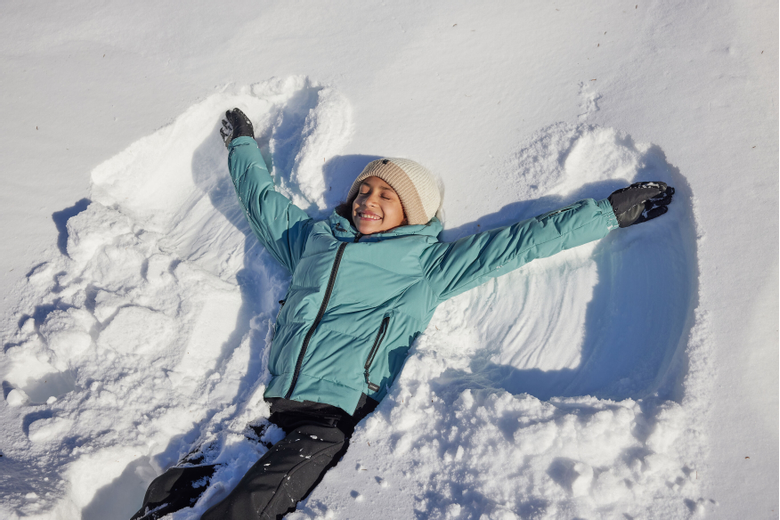
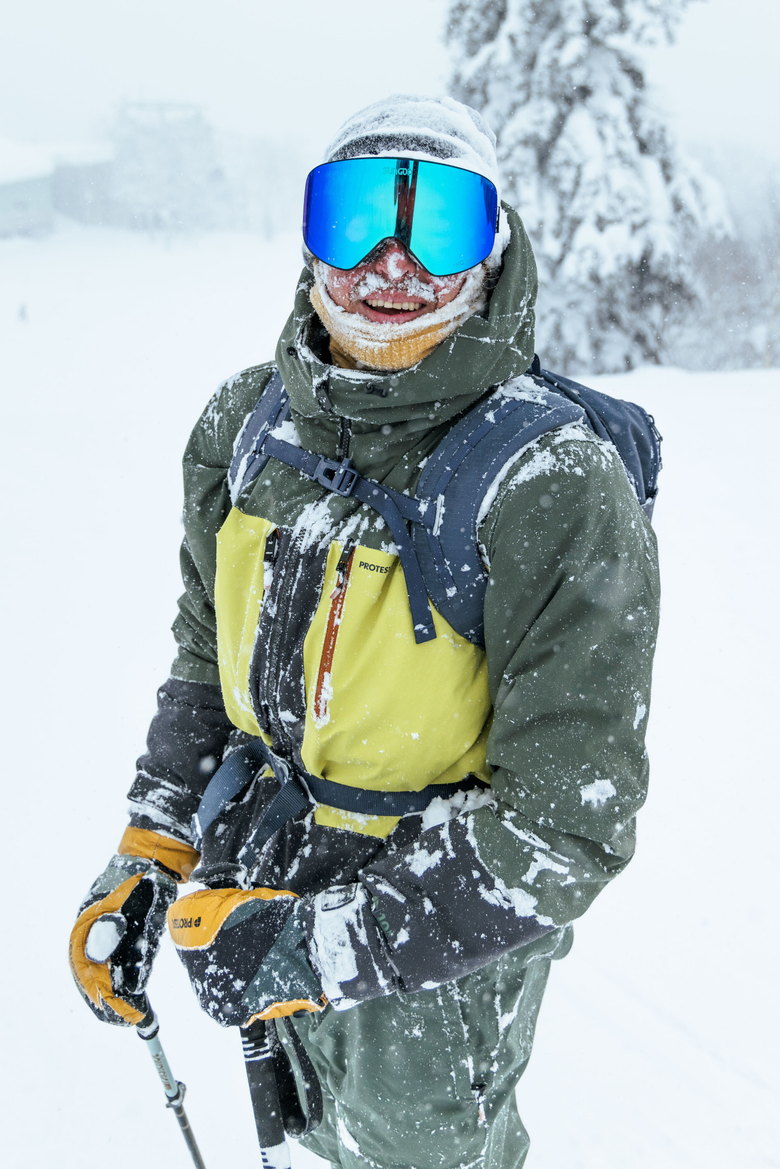
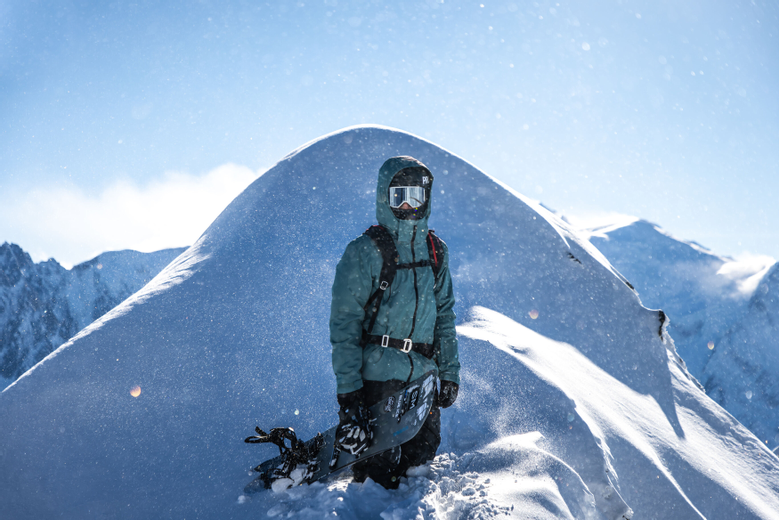
Conclusion
So that’s our rundown on the water column, water resistance and breathability. We’ve talked about the difference between clothing being waterproof and water resistant and why it’s important that your ski and snowboard clothing are both breathable and water resistant. You’ve also learnt how to reapply the DWR or durable water resistant coating. Have fun finding the right outfit for your winter adventure right here at Protest.